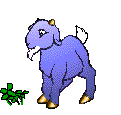
Algebra and Functions

Properties
1.1 1.1 Identify, sort, and classify objects by attribute and identify objects that do not belong to a particular group (e.g., all these balls are green, those are red).
|
1.2 Identify, describe, and extend simple patterns (such as circles or triangles) by referring to their shapes, sizes, or colors.
|
|

Algebra and Functions

Solving Equations
1.1 Write and solve number sentences from problem situations that express relationships involving addition and subtraction.
1.2 Understand the
meaning of the symbols +, −, =.
1.3 Create problem situations that might lead to given number sentences involving addition and subtraction..
|

Properties
2.0 Students sort objects and create and describe patterns by numbers, shapes, sizes, rhythms, or colors:
2.1 Describe, extend, and explain ways to get to a next element in simple repeating
patterns (e.g., rhythmic, numeric, color, and shape)..
|
|

Algebra and Functions

Properties

Key Standard
1.14 Use the commutative and associative rules to simplify mental calculations and to check results.
|
|

Properties

Key Standard
1.14 Use the commutative and associative rules to simplify mental calculations and to check results.
|
|
|
|
Blue Print 6 ( 9%)

Solving Equations
1.21 Relate problem situations to number sentences involving addition and subtraction.
|
1.31 Solve addition and subtraction problems by using data from simple charts, picture graphs, and number sentences.
|
|
|
\Blue Prints 12 (18%)

Solving Equations

Key Standard
1.1.4 Represent relationships of quantities in the form of mathematical expressions, equations, or inequalities.
|
1.2.1 Solve problems involving numeric equations or inequalities.
1.3 1 Select appropriate operational and relational symbols to make an expression true (e.g., if 4 __ 3 = 12, what operational symbol goes in the blank?).
|

Conversions
1.4 1 Express simple unit conversions in symbolic form (e.g., __ inches = __ feet × 12).
|

Properties
1.51 Recognize and use the commutative and associative properties of multiplication (e.g., if 5 × 7 = 35, then what is 7 × 5? and if 5 × 7 × 3 = 105, then what is 7 × 3 × 5?).
2.0 Students represent simple functional relationships:
2.13 Solve simple problems involving a functional relationship between two quantities (e.g., find the total cost of multiple items given the cost per unit).
2.21 Extend and recognize a linear pattern by its rules (e.g., the number of legs on a given number of horses may be calculated by counting by 4s or by multiplying the number of horses by 4).
|
|
Blue Print 18 (28%

Solving Equations
1.11 Use letters, boxes, or other symbols to stand for any number in simple expressions or equations (e.g., demonstrate an understanding and the use of the concept of a variable).

Key Standard
1.25 Interpret and evaluate mathematical expressions that now use parentheses.
|
1.3 Use parentheses to indicate which operation to perform first when writing expressions
containing more than two terms and different operations.
|

Conversions
1.41 Use and interpret formulas (e.g., area = length × width or A = lw) to answer questions about quantities and their relationships.
|
1.52 Understand that an equation such as y = 3x + 5 is a prescription for determining a second number when a first number is given.
2.0 Students know how to manipulate equations:
2.13 Know and understand that equals added to equals are equal.
2.23 Know and understand that equals multiplied by equals are equal.
|

Conversions
1.41 Use and interpret formulas (e.g., area = length × width or A = lw) to answer questions about quantities and their relationships.
|
|

Solving Equations

Key Standard
1.26 Use a letter to represent an unknown number; write and evaluate simple algebraic expressions in one variable by substitution.
|
|

Properties
1.31Know and use the distributive property in equations and expressions with variables.
|

Charts, Data, Function Tables and Graphs

Key Standard
1.44 Identify and graph ordered pairs in the four quadrants of the coordinate plane.
|

Key Standard
1.5 5 Solve problems involving linear functions with integer values; write the equation; and graph the resulting ordered pairs of integers on a grid.
|
|
|
Blue Print 19 (29%)

Solving Equations

Key Standard
1.16 Write and solve one-step linear equations in one variable.
|
1.21 Write and evaluate an algebraic expression for a given si
tuation, using up to three variables.
|

Properties
1.31 Apply algebraic order of operations and the commutative, associative, and distributive
properties to evaluate expressions; and justify each step in the process.
|

Solving Equations
1.41 Solve problems manually by using the correct order of operations or by using a scientific calculator.
|

Conversions
2.0 Students analyze and use tables, graphs, and rules to solve problems involving rates and proportions:
2.11 Convert one unit of measurement to another (e.g., from feet to miles, from centimeters
to inches).
2.26 Demonstrate an understanding that rate is a measure of one quantity per unit value of another quantity.
2.3 1 Solve problems involving rates, average speed, distance, and time.
|
|




